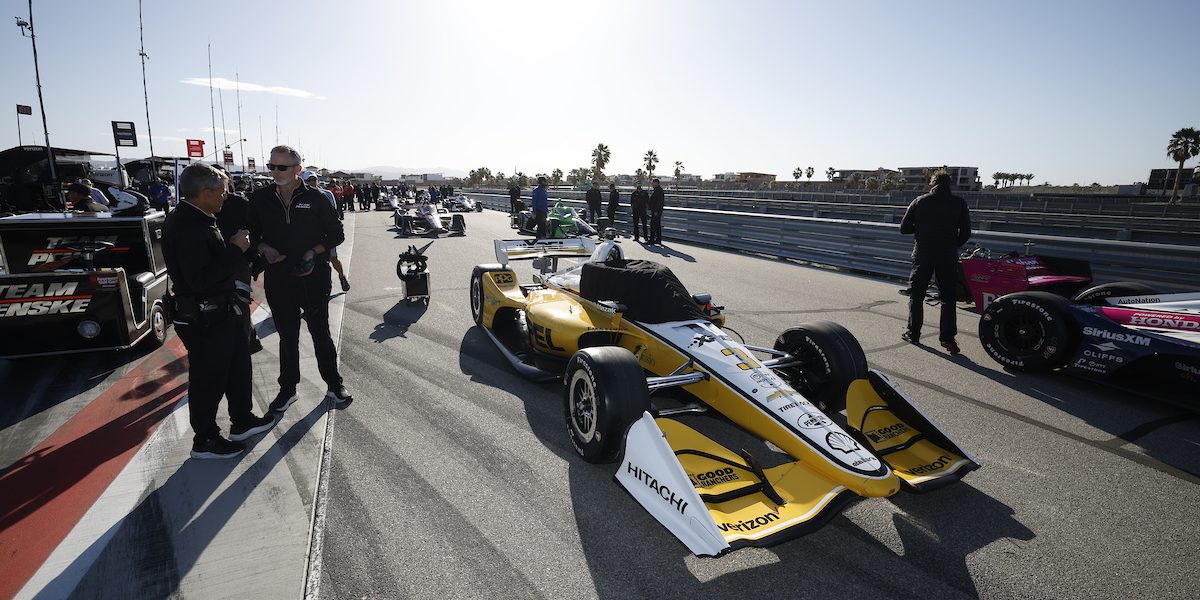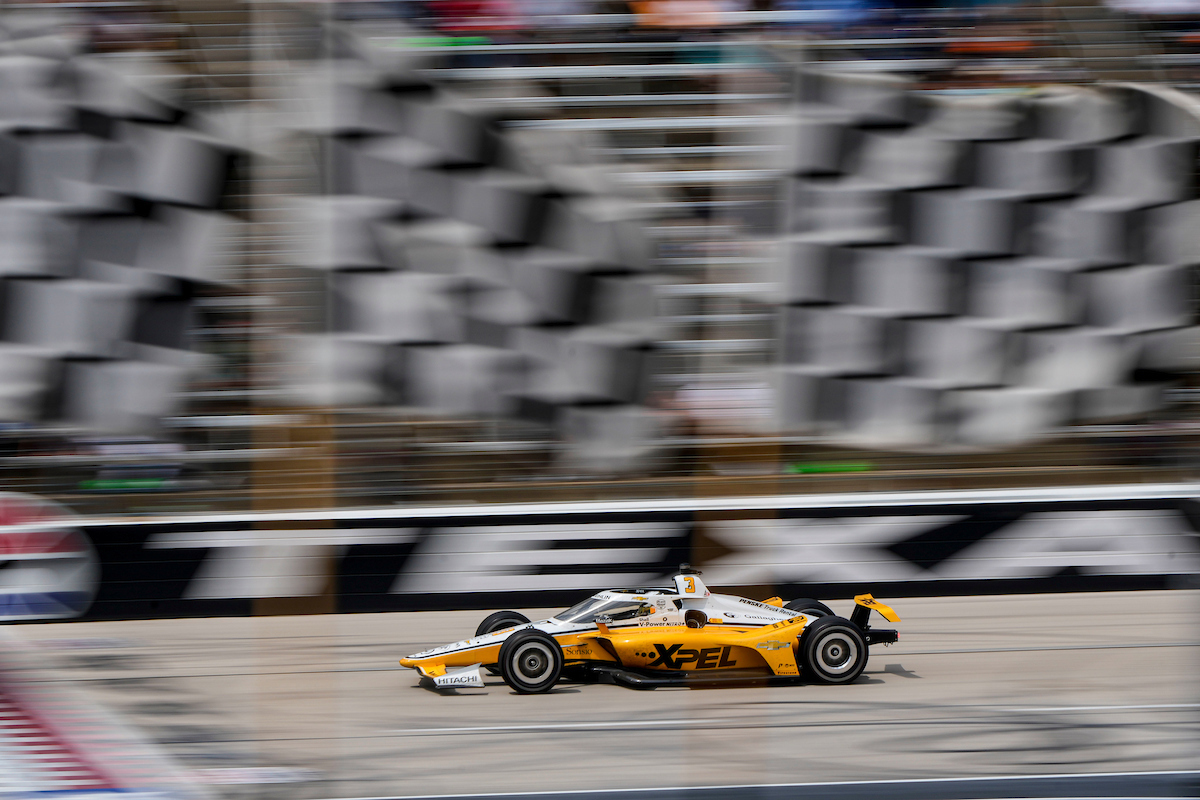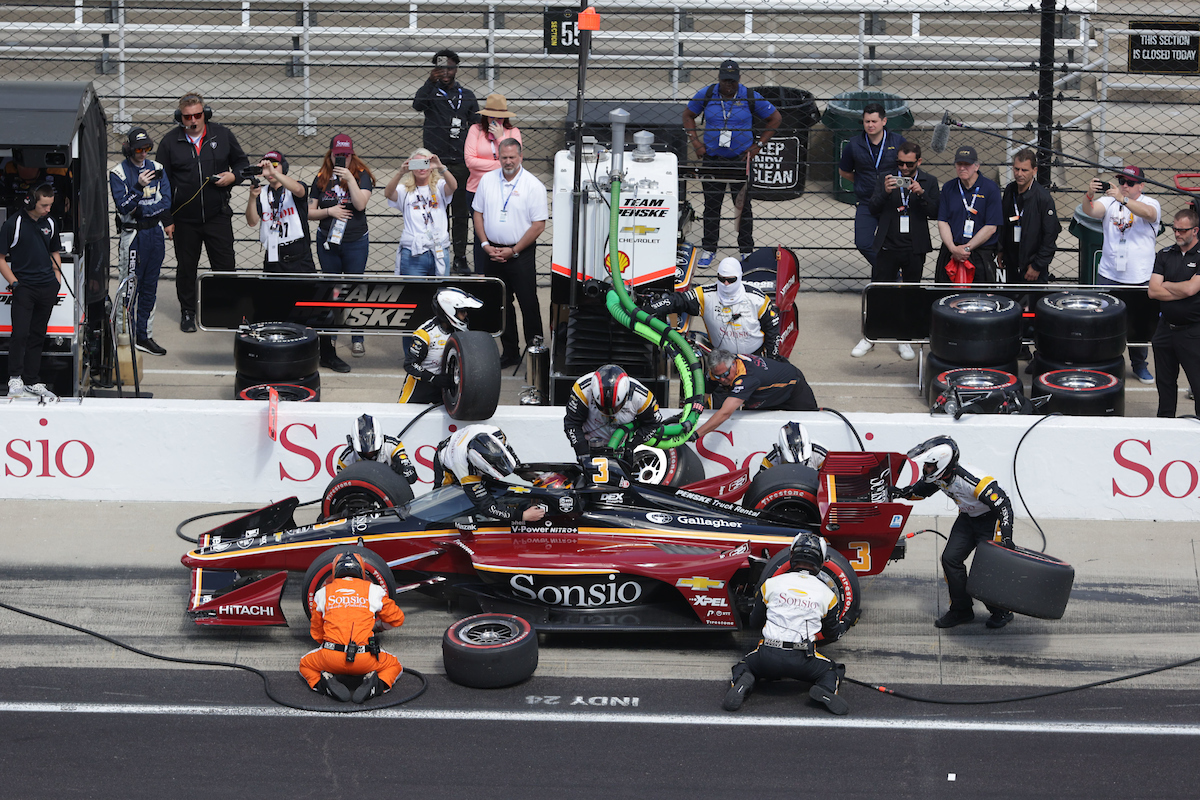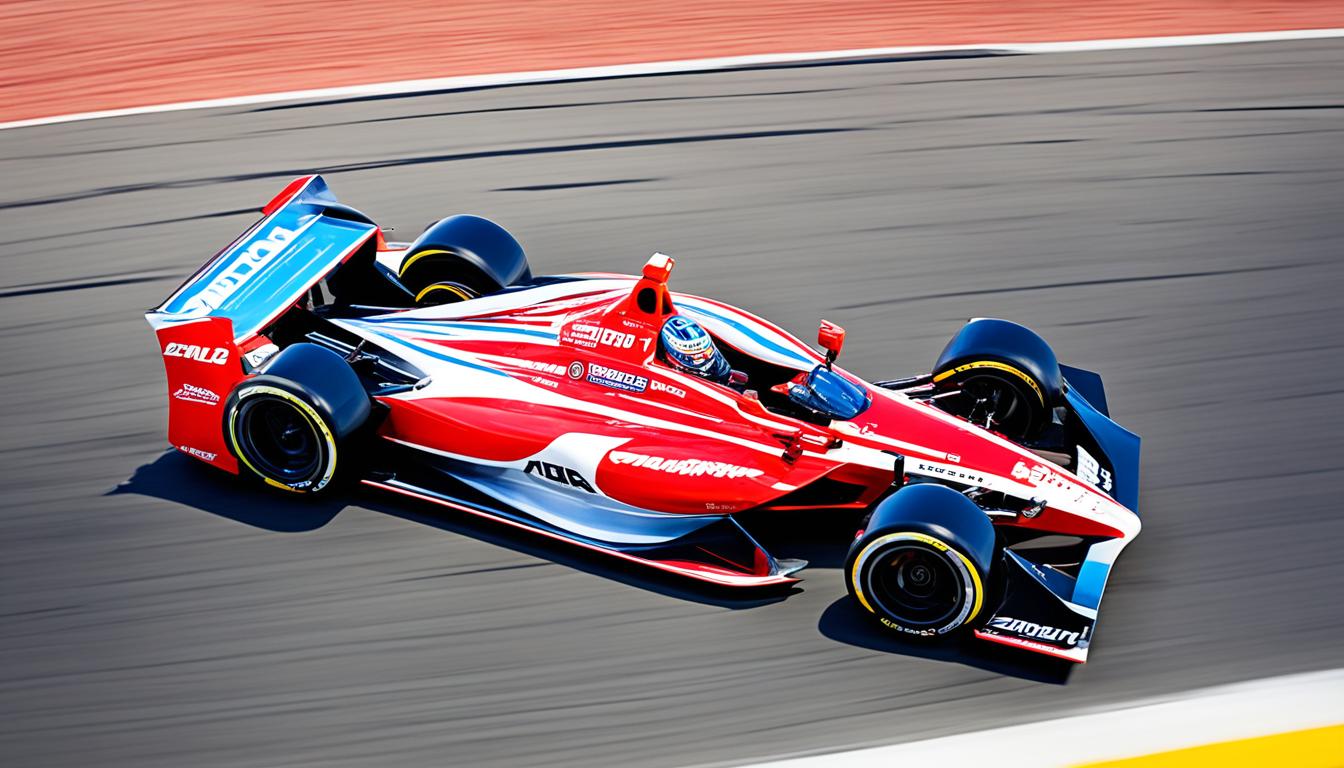IndyCar Teams’ Prep for Race Weekend Unveiled


Ever thought about how IndyCar teams get ready for race weekends? They use special plans and actions to do their best and win. Let’s explore how IndyCar teams get all set for the big races.
Table of Contents
Setting the Schedule: Race Weekend Planning for IndyCar Teams
Planning for a race weekend is key for IndyCar teams. They check the race schedule closely and make a full plan. This plan includes different sessions like practices, qualifiers, and the main race.
IndyCar teams look at the schedule to decide on their strategy. They plan what they want to do in each session carefully. This helps them run their cars better throughout the whole weekend.
Teams work hard to find the right mix of pushing their cars and making sure they work well. They look at the track, the weather, and past info to set up the cars right. This means changing things like the way the car is set up and the engine to fit each track well.
They also get ready for any problems that might come up. Teams think about things like tire wear and if the safety car might have to come out. This way, if something unexpected happens, they are ready to handle it and still do well.
Planning for race weekends also includes managing where the team goes and their stuff. They make sure everything runs smoothly. They also plan time for drivers to talk, for team meetings, and for the media. But their main focus is doing well on the track.
Key Elements of Race Weekend Planning:
- Thorough analysis of the race schedule
- Strategic planning for each session
- Optimizing car performance for different track conditions
- Developing contingency plans for potential challenges
- Efficient logistics and resource management
| Session | Objective | Strategy |
|---|---|---|
| Practice | Refine car setup and driver performance | Focus on data gathering and fine-tuning |
| Qualifying | Secure a favorable starting position on the grid | Optimize car setup for peak performance |
| Race | Achieve the best possible result | Execute race strategy with calculated risk |
Race weekend planning makes success possible in IndyCar racing. It helps teams go into each day with a clear plan and goal. By looking at the schedule, getting their cars ready, and planning well, IndyCar teams get an edge for race day.
Technical Preparations: Optimizing IndyCar Performance for Race Weekends
IndyCar teams work hard to get their cars ready for race weekends. They check and adjust every part of the car. This makes sure the cars run fast, turn well, and perform their best on the track.
IndyCar Performance: Teams look closely at the car’s parts to make them better. They focus on making the car go through the air smoother, improving how it turns, and making the engine work perfectly. These changes help the car to be faster and handle the track better.
Race Weekend Optimization: Teams use past race data to improve. They work with experts to figure out what changes will make the car work better. This smart data use helps them get ready for the next race by fixing any problems and making the car perform its best.
Optimizing Aerodynamics
Teams make the car’s aerodynamics better to go faster. They carefully design the car’s shape to reduce wind resistance and increase downforce. This lets the car corner at high speeds better and stick to the track. They use modern technology and testing to perfect the car’s body, wings, and other parts.
Fine-Tuning Suspension
Getting the suspension just right is important for how the car handles. Teams adjust the suspension to find a balance between smooth driving and high performance. This makes the car handle turns well, soak up bumps, and keep control at top speeds.
Engine Optimization
The engine is vital, and teams work with experts to make it better. They tweak the engine for more power and better efficiency without breaking down. Even gaining a little more power can help the car race better. So, they do everything to make the engine perform its best.
Data Analysis and Lessons Learned
Teams use data analysis to spot areas for improvement. They look at how the car and driver perform to find ways to get better. This analytical approach helps them make smart adjustments to the car’s setup.
They also learn from past races to do better in future ones. By studying what worked and what didn’t in different conditions, they get smarter. This helps them adjust their game plan and prepare for challenges ahead.
With a team effort, engineers, mechanics, and data experts improve the cars. They focus on the details and use data to reach for the win. This strategy helps them prepare their cars to perform at their peak during races.
Pit Stop Strategies: Quick and Efficient Service During Race Weekends
In the exciting world of IndyCar racing, pit stops are key to winning. IndyCar teams work hard to make their pit stops flawless. They do tire changes, refuel the car, and make sure it’s set up right. This quick and precise work can change the whole race outcome.
Pit stop strategies are all about doing important tasks fast. IndyCar teams know that even a single second can be crucial. A perfect pit stop can mean the difference between winning and losing.
Teams train their pit crews a lot to be super fast and accurate. Pit crew members are very fit. They can do their job well under the stress of a race.
Every team member works together smoothly during a pit stop. From the person fueling up to the one changing the tires, everything must go like clockwork. This teamwork is the result of endless practice.
Teams also use high-tech tools and real-time data to make their pit stops better. This data helps them find ways to be even quicker and more efficient.
A successful pit stop boosts a driver’s chances to stay ahead in the race. These strategies show how hard IndyCar teams work to be the best. They aim for nothing less than top performance on race days.
| Task | Description |
|---|---|
| Tire Changes | Quickly replacing worn tires with fresh ones to maintain optimal grip and handling. |
| Refueling | Efficiently replenishing the car’s fuel during the pit stop to ensure sufficient energy for the remainder of the race. |
| Adjustments | Making necessary adjustments to the car’s setup, such as changing wing angles or suspension settings, to optimize performance based on track conditions. |
| Data Analysis | Analyzing real-time data to identify areas for improvement and adjust strategies accordingly. |
| Physical Training | Engaging in rigorous physical fitness routines to enhance endurance, strength, and agility. |
Driver Preparations: Mental and Physical Training for Race Weekends
As race weekends get closer, IndyCar drivers know they need to be in top shape. They focus on both their minds and bodies to perform better on the track. They train hard to boost endurance, strength, and how fast they react. This helps them handle the tough races and stay competitive from start to finish.
But getting fit is only part of it. To stand out in IndyCar racing, drivers also team up with sports psychologists. These experts teach them mental tactics for staying focused, calm, and strong.
Working with sports psychologists, drivers pick up skills to deal with the stress of racing. They do mental exercises to get ready for all parts of the race, like tricky turns or when to pass other cars. These workouts give drivers an edge by improving their thinking and making them feel more sure of themselves.
Drivers also do mindful practices and meditation. This helps them keep cool and clear during the fast and tense races. Being in the moment helps them react quickly and make the best moves on the track.
By looking after their minds and bodies, IndyCar drivers get ready for race weekends. Their full-on training serves them well, giving them what they need to excel. This makes them keep striving to do their very best.
Mental and Physical Training: Key Factors for Success
Being physically and mentally ready is key for race weekends. A strong body helps drivers meet the tough demands of racing, while a keen mind lets them make smart, fast choices.
IndyCar teams see how important complete training is. They fully support drivers so they can be their best physically and mentally. By combining their physical strength with mental sharpness, drivers reach their highest potential. This makes them ready to take on any challenge on race day.
Data Analysis: Leveraging Technology to Improve Performance
IndyCar teams know how important it is to use data analysis to get better at racing. They collect lots of data during practice, qualifying, and races. This data gives them important clues for making their cars perform better.
Looking at factors like tire wear, fuel use, and the drivers’ laps helps teams see where they can do better. This knowledge helps them tweak their plans to race smarter.
Telemetry is a big part of data analysis in IndyCar. It’s about real-time data on things like speed and how the car’s engine and suspension are doing. This data goes straight to the people who can use it to make the car better on the spot.
Teams use data to compare with other teams to see what they’re good at and where they lack. By doing this, they can figure out how to be better than their competition.
Data isn’t just for what happens on the track. Teams also look at weather, track data, and their racing plans. This helps them pick the best tires, decide when to stop for new ones, and manage fuel. By using all this technology and data, IndyCar teams can do their best and up their chances of winning.
Data Analysis in IndyCar Racing:
- Collecting and analyzing data from practice sessions, qualifying rounds, and races
- Using advanced technologies and software to gain valuable insights
- Monitoring real-time data through telemetry systems
- Comparing data with competitors to identify strengths and weaknesses
- Analyzing weather conditions and race strategy for informed decision-making
Collaboration and Communication: Teamwork on Race Weekends
IndyCar teams rely heavily on teamwork and good communication to perform well during races. Everyone from the drivers to the crew chiefs and strategists must work together. They share info, analyze data, and make smart decisions that affect how they do on the track.
Teams in IndyCar know that working together is key. They create a setting where everyone feels like they can talk openly and share ideas. This way, they get different viewpoints and use this mix of skills to come up with the best plans.
It’s very important that they all understand each other and have the same goal in mind. Good, clear communication means they can share important info fast. This lets them change plans quickly when needed on the race track.
Data Sharing and Analysis
Sharing and working with data is a big deal for IndyCar teams. They gather lots of info during practices, qualifiers, and races. This data is vital for making their cars and strategies better.
Thanks to modern tools, they can really dig into this data. They find patterns and figure out what they need to work on. Then, they change their cars and how they drive to get ahead.
Everyone from the engineers to the drivers plays a part in understanding this info. Working together, they improve their chances of winning. They identify chances to do better, cut risks, and choose plans that can really change the game.
Table: Key Benefits of Collaboration and Communication
| Benefit | Description |
|---|---|
| Enhanced Problem Solving | Teams can solve tough problems better when they work together. They look at things from various angles to find new answers. |
| Streamlined Processes | Clear communication reduces errors. This makes everything smoother and avoids delays, especially during key events like pit stops. |
| Continuous Learning | Working together helps teams learn non-stop. They share what they know, helping each other get better all the time. |
| Stronger Team Cohesion | Joining forces builds a stronger team bond. When everyone feels part of the team, they work harder, making the team more united. |
To sum up, teamwork and talking well are vital for IndyCar success. By working together, they bring out the best in each other. And by communicating clearly, they can act fast and smart during races. This approach gives them a real edge on race day.
Conclusion
IndyCar teams really focus on getting ready for race weekends. They pay a lot of attention to small details. This helps them perform their best on the track.
They plan each race weekend carefully. They look at the race schedule to create the best strategy for every part. This way, they make sure their cars run as well as possible during the whole event.
Getting the cars ready is a big part of their success. They adjust things like the car’s shape, how it moves, and its engine to perform better. They use a lot of data and new technology to do this.
Pit stops and preparing the drivers are also super important. Teams work hard to make their pit stops fast and smooth. This makes a big difference in the race. Drivers also train a lot so they’re ready for the tough races.
IndyCar teams all work together. They use data and talk a lot to make their plans and cars better. With everyone’s effort, they aim for the top results on race day. Their hard work and planning show how skilled they are on the race track.










